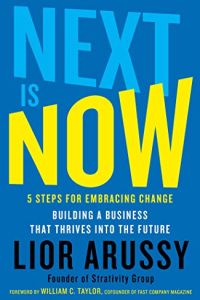加入 getAbstract 阅读摘要

加入 getAbstract 阅读摘要
Lior Arussy
Next Is Now
5 Steps for Embracing Change – Building a Business that Thrives into the Future
Simon & Schuster, 2018
看看什么内容?
In the modern, fast-paced world, change is the one constant.
Recommendation
People and organizations generally prefer the status quo, but being ordinary gets you nowhere. Companies that drop the status quo and embrace change will rocket past organizations that fear it and end up being irrelevant. Organizational culture strategist Lior Arussy provides a special five-step method for adapting t0, managing and even embracing change. His insightful, commonsense guidance will inspire executives to foster and grow comfortable with change.
Summary
About the Author
Lior Arussy is the founder and CEO of Strativity Group and an authority on the customer experience, culture design and customer-centric transformation.

















Comment on this summary